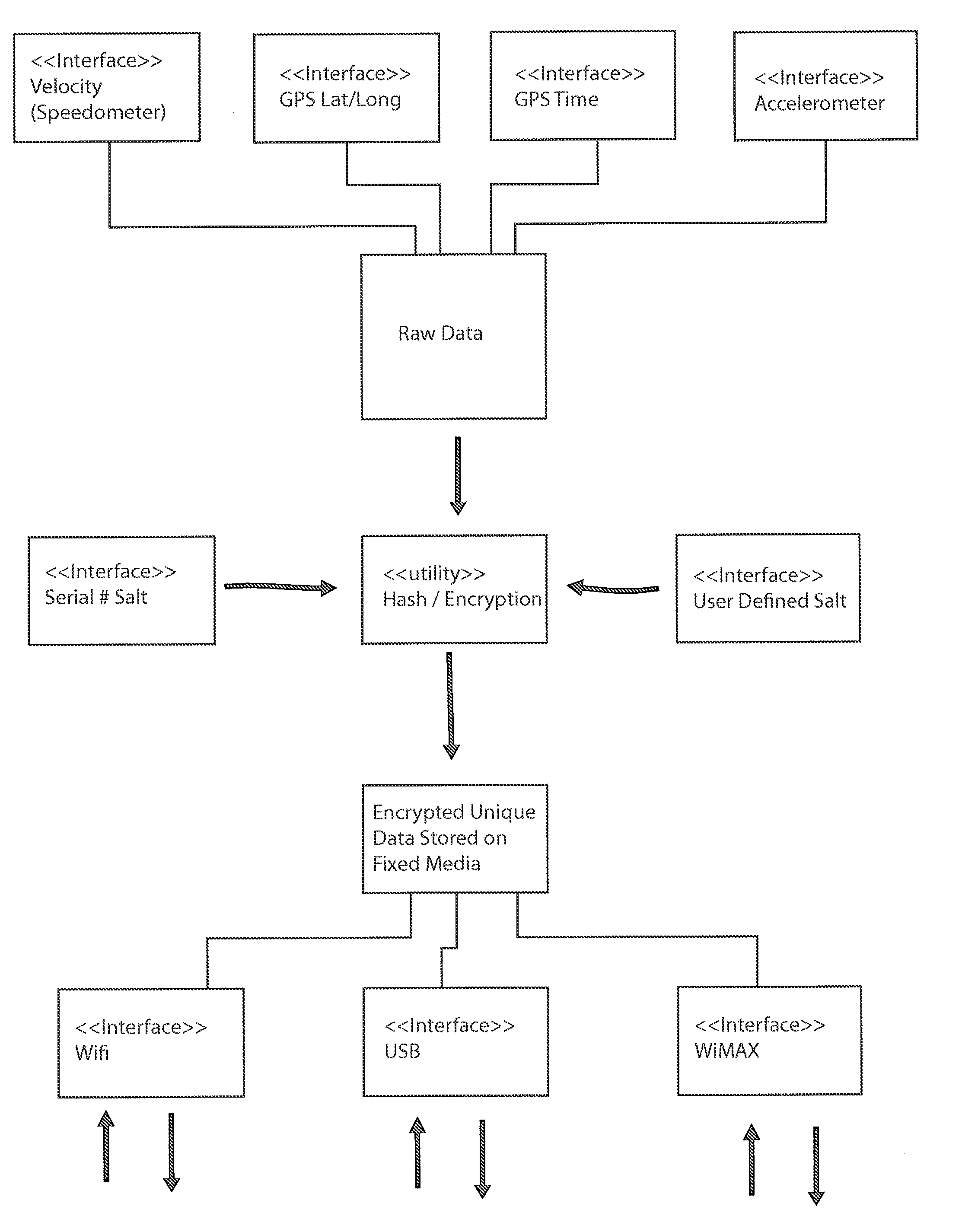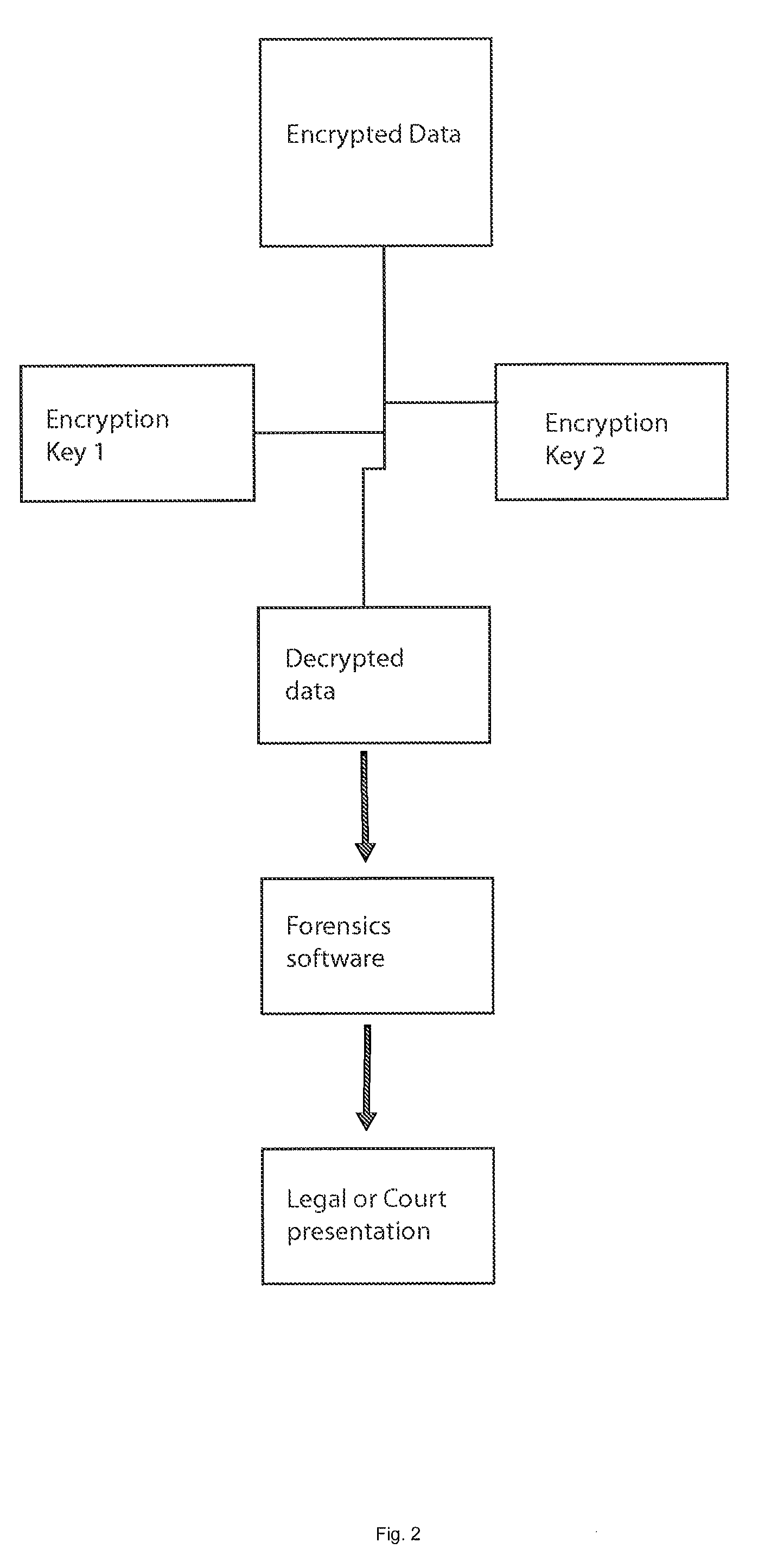Jolt and Jar Recorder System and Methods of Use Thereof
a recorder and jar technology, applied in the field of electronic monitoring, data collection and analysis systems, can solve the problems of unsafe driving, significant cost in direct loss, consequential loss, societal loss, and exponentially more difficult for transportation entities, and achieve the effect of efficient and economical
- Summary
- Abstract
- Description
- Claims
- Application Information
AI Technical Summary
Benefits of technology
Problems solved by technology
Method used
Image
Examples
example 1
Transit Authority Bus
[0065]The present invention may, in an embodiment, be deployed to monitor a public transit vehicle, such as a bus, train, plane or boat. The present example will focus on deployment of the system on a bus. A plurality of cameras configured to take video and / or photographs are stationed at all necessary points on said bus, such as at preferred locations that provide a clear line of sight to all doors in order to acquire video and still images of each person entering and exiting the vehicle, thereby collecting data and preserving it on an on-board DVR or similar recording device. Additionally, other data collection devices, receivers, and sensors, such as an accelerometer, GPS locator and GPS timestamp may be installed. Data collected could also include: temperature (inside and outside); weather conditions; tire slip; roll, yaw, pitch; altitude; speed and changes to speed; GPS data; any available Radio Signals and the strength and source of those signals; vibratio...
example 2
Fruit Freight Transport
[0067]Another location in which the present invention might be deployed would be in a freight situation. Particularly one in which the cargo is fragile, such as fruit. In this example cameras might not be necessary, but the other interfaces could preserve and encrypt data related to the transport of a particular cargo or container. Should the container be subjected to anomalous movement, then the data will be noted and flagged for later review. Further, if the company is later informed of a complaint of bruised or battered produce, the company may look back at stored records to determine where the damage was incurred. The present invention might prove extremely useful to commodities companies interested in maintaining the value of their product by providing smooth transportation, this might be particularly important in the transport of fruit or other produce as well as in the case of hazardous substances.
PUM
 Login to View More
Login to View More Abstract
Description
Claims
Application Information
 Login to View More
Login to View More - R&D
- Intellectual Property
- Life Sciences
- Materials
- Tech Scout
- Unparalleled Data Quality
- Higher Quality Content
- 60% Fewer Hallucinations
Browse by: Latest US Patents, China's latest patents, Technical Efficacy Thesaurus, Application Domain, Technology Topic, Popular Technical Reports.
© 2025 PatSnap. All rights reserved.Legal|Privacy policy|Modern Slavery Act Transparency Statement|Sitemap|About US| Contact US: help@patsnap.com



